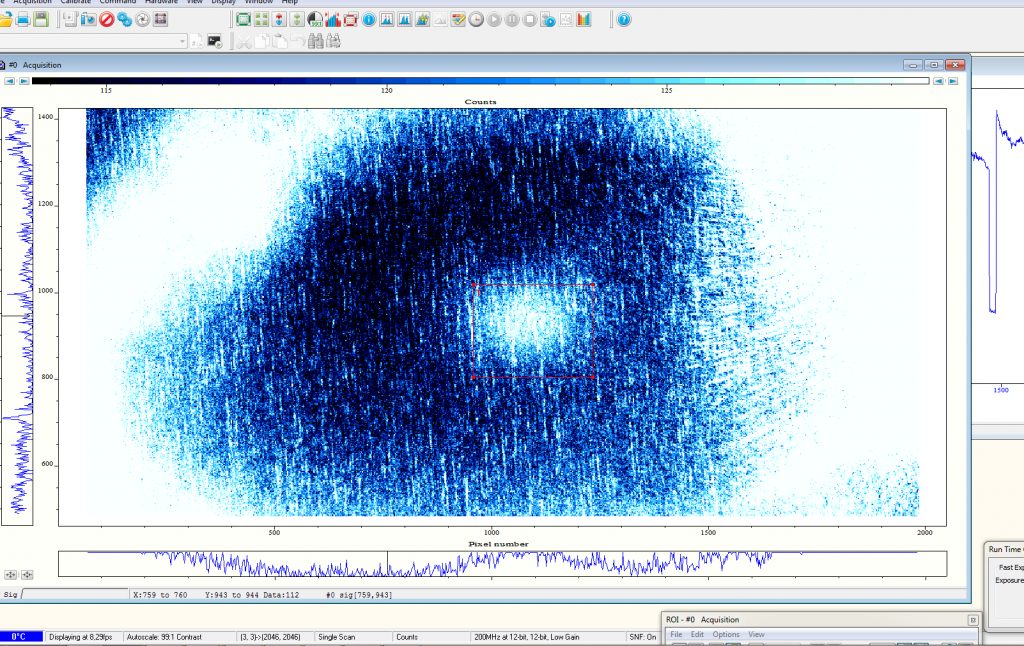ver comunicado en castellano acá
We present a chronicle of the first month of measurements and fine tuning after the first ion trapping.
On February 7 we trapped ions for the first time. Here is an image of one of our first ion clouds. The ions are the roundish spot in the middle. The outer ring is the scattered light from the 1.25 mm ring electrode. There are maybe a few hundred ions in that cloud.

The following day after tuning parameters we already had some evidence of single ion loading. See the following graph of total fluorescence as a function of time. At the right hand side, one sees the fluorescence incrementing in steps. As of Scan Nr 1100 we reset the trap, then one step then a second one. Then we reset the trap again. Following come one, two and three ions, as one can see by the tree distinct fluorescence steps.

At this point there were many things to tighten up. And it took us a month or so to do so. Se had improve laser stabilities whose frequencies and intensities were still drifting a bit, we extended our electronic control of the trap’s electrodes, we had to improve the optics to reduce scattered light and astigmatism and we had to haunt some nasty electronic noises from the immense amount of home-built systems we use. Below you see some of us and part of the control electronics as it looks in the darkened room we work in.

During this time, we did not only work, we also pretended to work for the cameras, as you can see in the previous and following two pictures of Martin Drechsler and Nicolás Nuñez Barreto, the two PhD students who put this experiment to work. (The pictures were taken by Franco Meconi).


A month later, we can say the trap is working very well. We can very stably trap ions for unlimited period of time and can do it in a controlled way. Below you will wee a plot showing a typical loading sequence and the images of the ions at each step. We load, in this sequence up to 6 ions.

There are some curious things to point out about this plot.
- The ions are not deterministically but statistically loaded into the trap. This is why the intervals between one loading and the next vary. Sometimes we even trap more than one in a blow, but we chose to show a graph without that feature. The statistics of appearance should be Poissonian.
- In the images for 3,5 and 6 ions one does not see clearly defined point-like ions, but ring structures. This is because the ions are revolving around the trap. They don’t find stable positions or are not sufficiently cooled on one axis so they move. Better understating this behaviour and controlling it is one of our immediate future tasks.

Finally, a picture of of us with Juan Pablo, our “general producer”, who put all his energy insight and help in making this happen.

